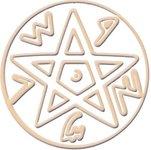The Nabatean site of Oboda (Avdat), excavated in 1958-1961, 1975-1977, and 1989, is renowned for its imposing architectural remains. The final report presents the architectural remains of the Nabatean sacred compound, of which the retaining walls, the temple court, the staircase tower, and the magnificent portal have survived, as well as the remains of a small temple identified with the deified King Obodas and discovered in 1989. Remains of the Late Roman period include a well-preserved tower, a patrician villa, and a burial cave. In the Late Roman-Byzantine period a citadel with walls and towers was built. Byzantine remains include the two churches constructed within the Nabatean sacred compound, a cave dwelling, a burial cave, and a bath house. Special reports describe the Late Roman and Byzantine architectural decoration, architectural elements in secondary use, coins, and small finds, including the splendid hoard of bronzes.
The site of Tel Batash is identified with Biblical Timnah, well known as the setting of the Samson stories. The final report of its stratigraphy and architecture provides a comprehensive picture of the history of the town. Its distinctive square shape and concave surface were determined by the ramparts of the Middle Bronze Age. The unwalled Late Bronze Age town contained several patrician houses. Philistine Timnah was a substantial and densely built-up site and the excavations provided evidence of the existence of a city wall. In the 10th century BCE the town was unwalled and sparsely settled, but the earliest phase of the city gate probably dates from this period. Timnah of the 8th-7th centuries BCE was defended by a stone wall and a city gate. The densely built-up town included large public buildings, private dwellings, and evidence of an olive oil industry. This two-part set consists of a text volume, lavishly illustrated by photographs and schematic plans, and a volume containing 107 detailed plans and sections.

